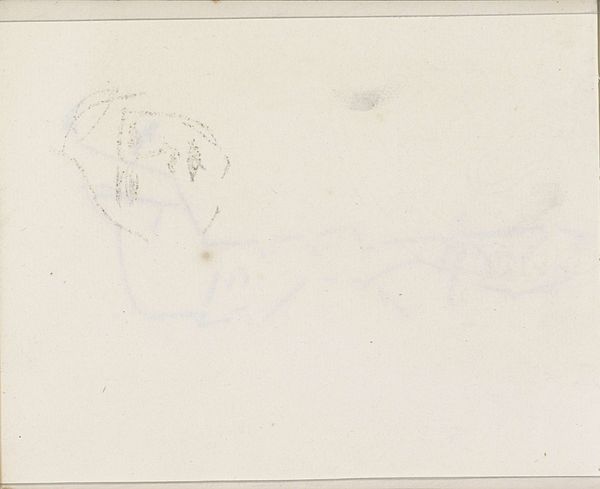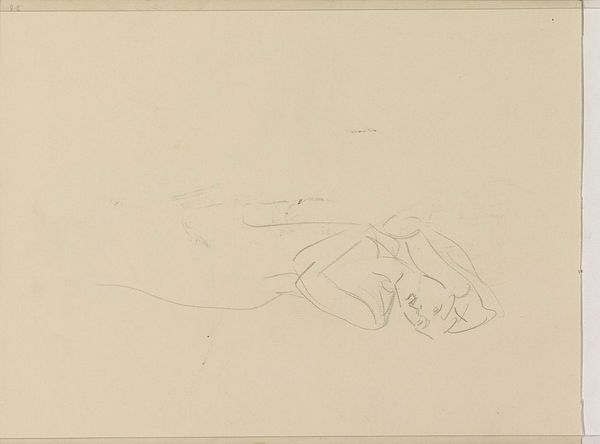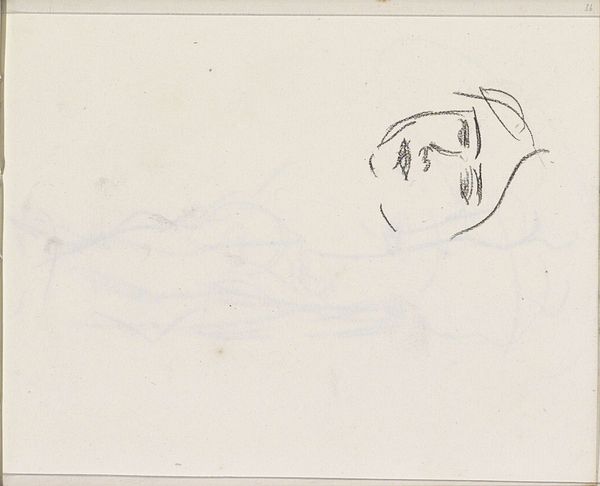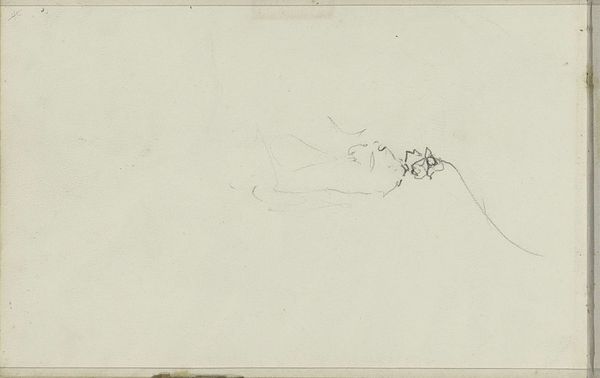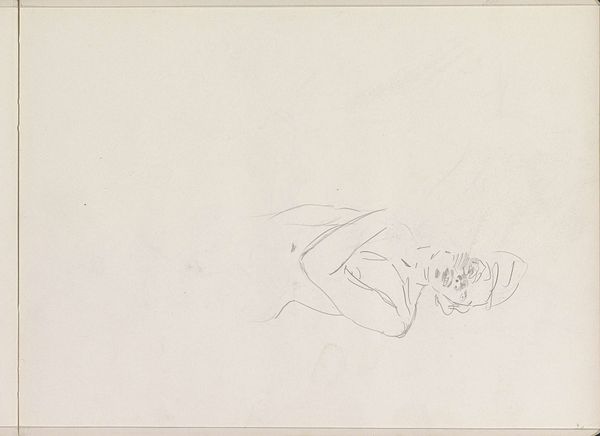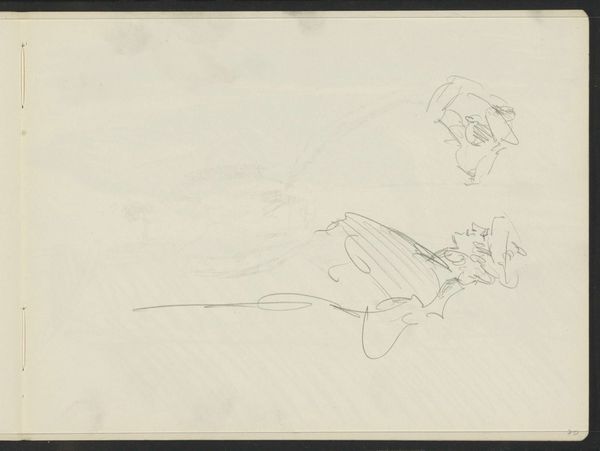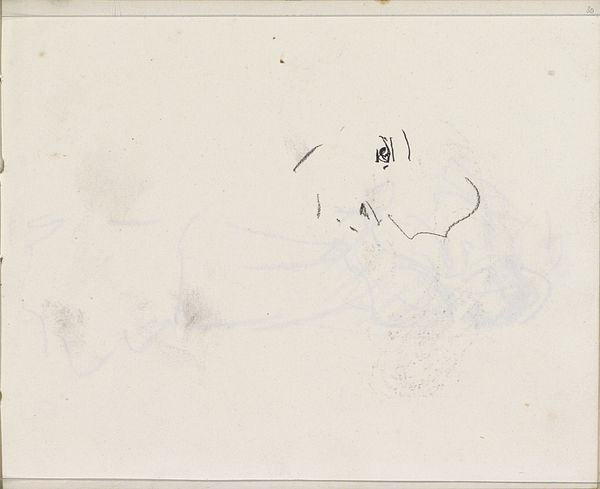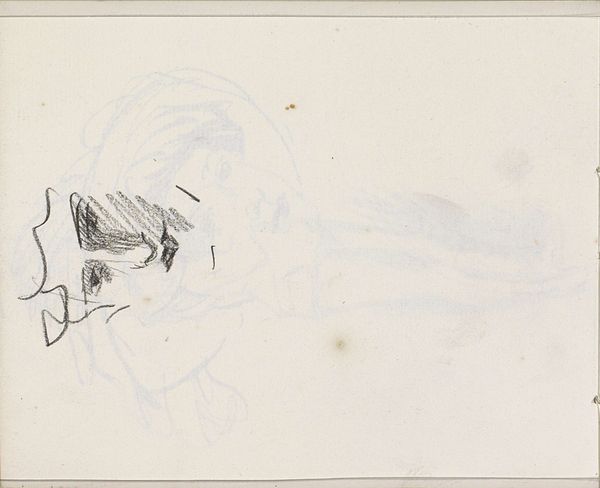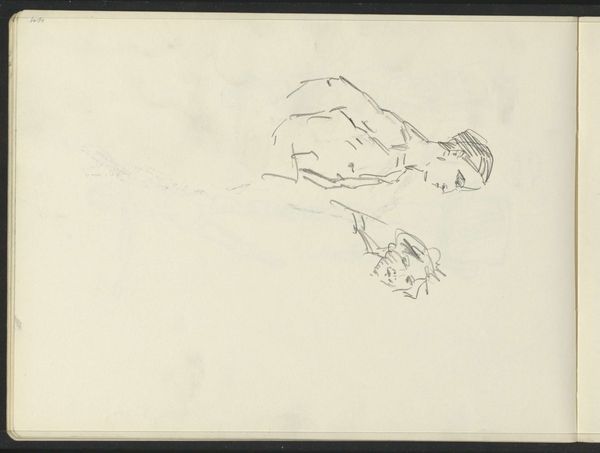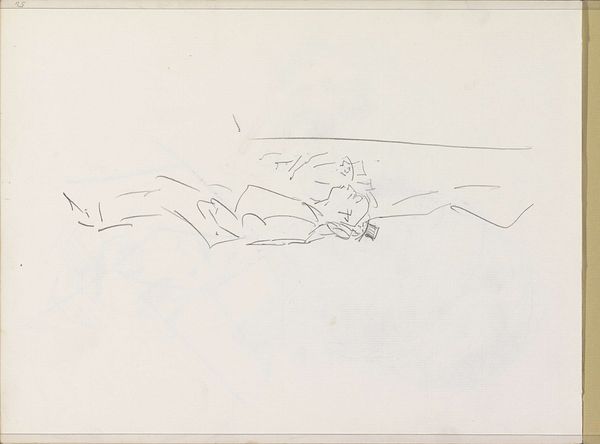
Copyright: Rijks Museum: Open Domain
Editor: This is "Vrouwenhoofd," or "Woman's Head," a pencil drawing by Isaac Israels, made sometime between 1875 and 1934. It’s currently at the Rijksmuseum. The sketchiness of the lines creates a sense of immediacy, as if the artist quickly captured a fleeting moment. What strikes you about its formal qualities? Curator: What's immediately apparent is the emphasis on line. The artist isn’t so much concerned with mimetic representation but rather with the energy and direction of marks. Observe how the hatching defines form, almost disregarding tonal modeling. The paper is integral; its emptiness dictates how we read form in positive and negative space. It is a record of gesture. Editor: Gesture is a great way to describe it! It almost feels like he's mapping her presence rather than drawing a portrait. Is that common for sketches like this? Curator: Indeed. Line serves not just to delineate but also to create volume and depth through density. The lack of a background throws the subject forward. Do you notice how the rough texture gives dimension to the drawing as a whole? It's the foundation upon which all its representational qualities rest. The formal construction creates depth that narrative considerations are secondary to. Editor: So it's about the action of drawing as much as about the subject itself? Curator: Precisely. Israels appears to be exploring the potential of the medium, a conversation between hand, eye, and material. Compositionally, note the relationship of figure to ground and how dynamic contrast replaces detailed finish. What did you learn, then? Editor: I see how looking at the line quality helps to appreciate the drawing's abstract elements in addition to the subject it represents. Thanks. Curator: My pleasure. This approach opens richer perspectives.
Comments
No comments
Be the first to comment and join the conversation on the ultimate creative platform.
